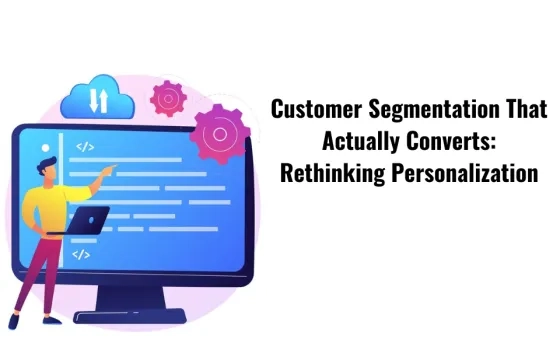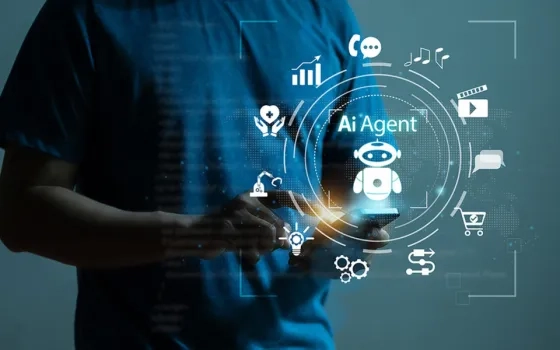Introduction
Every click, scroll, and pause tells a story—yet most businesses are still grouping customers by age or zip code. In an era where attention is currency, such outdated segmentation is like trying to stream 4K video over dial-up. To truly connect with modern consumers, brands need smarter ways to read digital behavior and respond with precision. That’s where Python Machine Learning turns the game on its head.
By leveraging behavioral data and advanced clustering algorithms, businesses can now redefine customer segmentation in ways that are more precise, predictive, and profitable. No longer just demographic tags or buyer personas, segmentation models today are built using dynamic, data-driven insights that adapt in real time.
This article explores how ML-driven segmentation, built with Python frameworks, goes beyond static categories to deliver meaningful personalization, optimize acquisition, and drive long-term customer value.
Why Traditional Segmentation Falls Short?
Traditional CRM segmentation typically groups customers by basic identifiers such as age, gender, location, or purchase history. While this may have sufficed in the early days of digital marketing, today's users leave behind massive behavioral footprints that demand deeper interpretation.
Here’s why static segmentation fails:
- Lacks context: Users may behave differently based on device, time of day, or intent—none of which are captured by legacy rules.
- Stale insights: Static lists are not updated in real time and cannot react to new behavior.
- Oversimplified assumptions: Assuming all Gen Z or urban users behave similarly results in message fatigue and irrelevance.
- By contrast, Python machine learning empowers companies to create micro-segments using data-driven approaches such as clustering, classification, and recommendation algorithms.
The Power of Behavioral Clustering
Behavioral clustering is a form of unsupervised learning where algorithms group users based on similarities in actions rather than fixed attributes. Popular algorithms include:
- K-Means Clustering
- DBSCAN (Density-Based Spatial Clustering)
- Hierarchical Clustering
Using Python machine learning libraries like Scikit-learn or PyCaret, businesses can analyze massive datasets to uncover hidden patterns—for instance, grouping customers by browsing time, product affinity, cart abandonment frequency, or content engagement style.
This enables highly specific targeting such as:
- High-frequency browsers with low purchase rates (ripe for retargeting)
- One-time big spenders (ideal for loyalty offers)
- Seasonal gift buyers (opportunity for time-based promotions)
Such segmentation is impossible to achieve with manual filters or CRM checkboxes.
Real-Time Personalization at Scale
One of the biggest advantages of using machine learning is its ability to act on data in real time. By integrating Python-based ML models into customer data platforms (CDPs) or marketing automation tools, businesses can serve hyper-personalized experiences based on immediate behavioral cues.
Example use cases include:
- Recommending products based on recent search history
- Adjusting pricing dynamically for high-intent users
- Triggering specific email journeys for at-risk customers
The underlying models learn and adapt continuously, meaning your personalization strategies become smarter over time—something traditional segmentation cannot replicate.
Using Python for Feature Engineering
Data alone doesn’t drive outcomes—features do. This is where Python truly shines. Feature engineering is the process of extracting meaningful variables from raw data that help models make accurate predictions.
In a customer segmentation context, useful features might include:
- Average session duration per visit
- Days since last purchase
- Conversion rate by device type
- Click-to-cart ratio
Python libraries like Pandas, NumPy, and FeatureTools allow data scientists to create these features at scale. With effective feature engineering, businesses can uncover powerful behavioral insights that feed segmentation models, ultimately improving targeting precision and ROI.
Predictive Segmentation with Supervised Learning
While clustering helps find patterns, supervised learning takes segmentation to the next level by predicting future behavior.
For example:
- Will this user convert in the next 7 days?
- Is this subscriber likely to churn this month?
- What’s the expected lifetime value of a new customer?
Python-based machine learning models such as logistic regression, random forests, or gradient boosting machines (e.g., XGBoost) can be trained on historical customer data to make these predictions.
These models help businesses create intent-based segments:
- Likely-to-convert users → prioritize with high-intent offers
- Likely-to-churn customers → enroll in win-back campaigns
- High-LTV newcomers → incentivize long-term subscriptions
Such predictive segmentation leads to better use of marketing budgets and higher ROI per campaign.
Explainable AI for Business Teams
A common challenge with machine learning adoption in marketing is that business stakeholders often feel disconnected from the models due to their complexity. However, Python tools like SHAP (SHapley Additive explanations) and LIME (Local Interpretable Model-agnostic Explanations) are changing the game.
These tools allow marketers and analysts to:
- Understand which features drive predictions
- See why a user was assigned to a certain segment
- Gain confidence in automated decision-making
Explainable AI is not just about transparency—it builds trust and enables wider adoption across cross-functional teams.
Case Study: ML-Powered Segmentation in Action
Let’s consider a D2C apparel brand. Traditionally, they segmented users into:
- Men/Women
- Urban/Rural
- High/Low spenders
With Python machine learning, they instead created segments like:
- “Style Browsers” — frequent visitors with low conversion
- “Weekend Flash Sale Shoppers” — spike in purchases on Saturdays
- “Discount Seekers” — high CTR on sales pages
Based on this new segmentation, they:
- Increased conversion rates by 27% using personalized banners
- Reduced churn by 19% with targeted loyalty campaigns
- Grew average order value by 15% for upsell-eligible cohorts
All segmentation logic was built using Python libraries, with updates running nightly via automated pipelines.
Scalability and Integration
Python's flexibility allows easy integration with popular marketing and data platforms such as:
- Salesforce, HubSpot (via APIs)
- Snowflake, BigQuery (for data warehousing)
- Tableau, Power BI (for visual reporting)
This means Python machine learning models can be plugged directly into your existing MarTech stack without overhauling your infrastructure. Whether you're an eCommerce startup or an enterprise SaaS provider, you can scale ML-powered personalization seamlessly.
The Competitive Edge of ML-Driven Segmentation
In today’s saturated markets, relevance is the differentiator. Customers expect content and offers that reflect their behavior and intent—not just their age or location.
Here’s what ML-powered segmentation delivers:
- Faster response to behavioral shifts
- Smarter campaign optimization
- Higher customer satisfaction and loyalty
When implemented correctly, Python machine learning doesn’t just improve conversion rates—it helps build a sustainable personalization engine that learns and evolves with your customer base.
Conclusion
The future of personalization lies in segmentation strategies that evolve with data. While legacy CRMs still hold value, they fall short in extracting the kind of dynamic, behavioral insights needed to thrive in a competitive digital economy.
Python machine learning offers a scalable, explainable, and impactful way to segment your customers not just by who they are, but by what they do—and what they’re likely to do next. It’s time to move beyond static tags and unlock the full potential of behavioral personalization.
For businesses serious about growth, segmentation that actually converts isn’t optional—it’s mission-critical.

















